Grand Union Canal:
Cosgrove "Iron Trunk" Aqueduct
4 February 2006
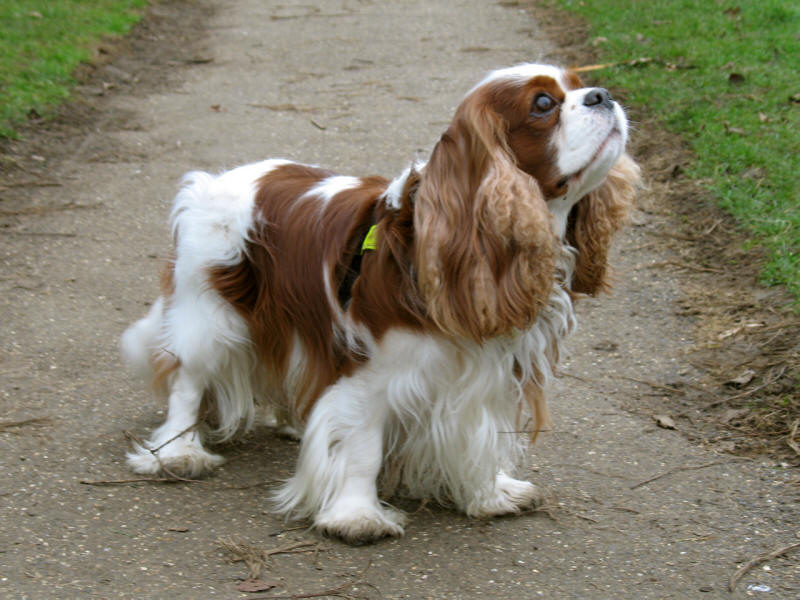
Having travelled to Milton Keynes to pick up a new grooming table, we took Henry
on a short expedition.
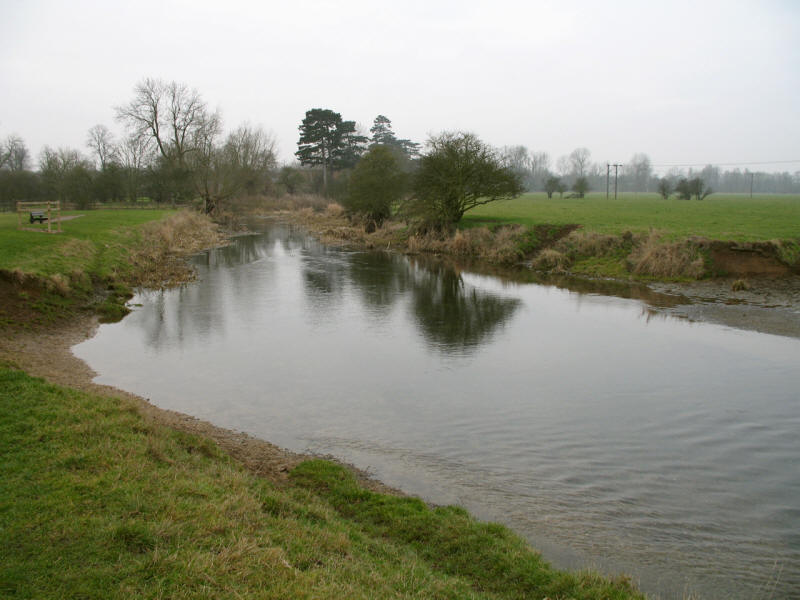
The River Great Ouse
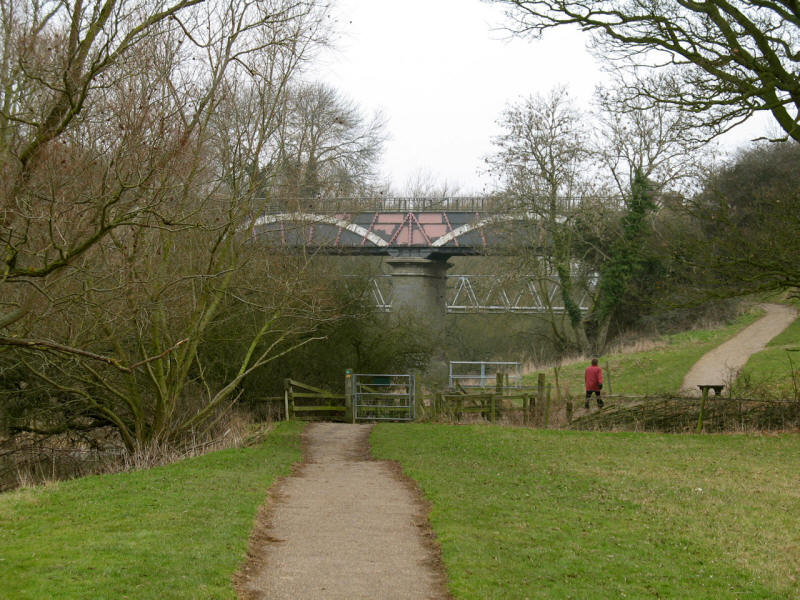
Walking along the river, the Cosgrove Iron Trunk Aqueduct comes into view.
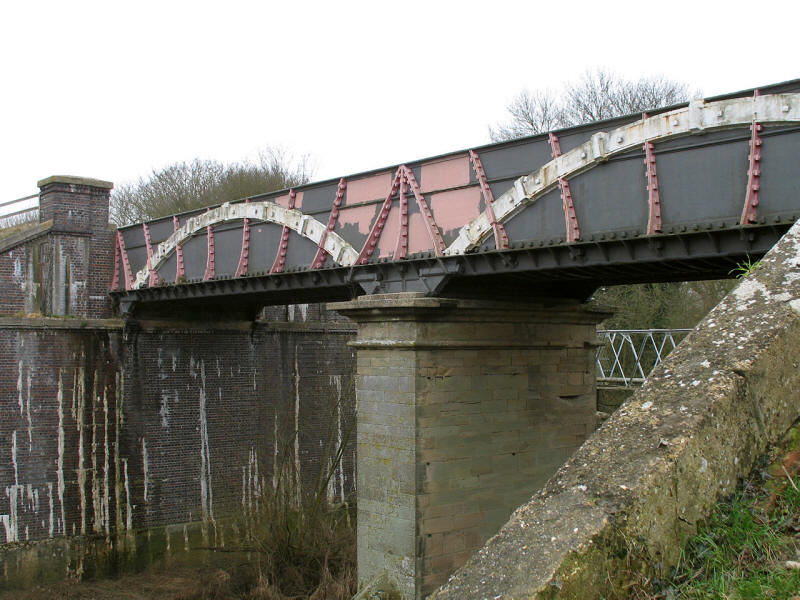
The river was initially by the canal crossed on the level, with four temporary
locks lowering the canal from the south-east, and five raising it from the river
towards the north-west (the top one of these locks still being in place today).
The temporary locks were used as a means of getting the canal open to through
traffic by 1800 (this river crossing and the tunnel at Blisworth being the only
two gaps by that year). However, it was always intended that the river should be
crossed by aqueduct, as the locks were wasteful of water, time-consuming and the
river in flood in winter could prevent through passage. A brick aqueduct was
built, but collapsed in 1808, after which the locks were re-opened. It was
replaced by the iron aqueduct seen today, which opened on 22 January 1811.
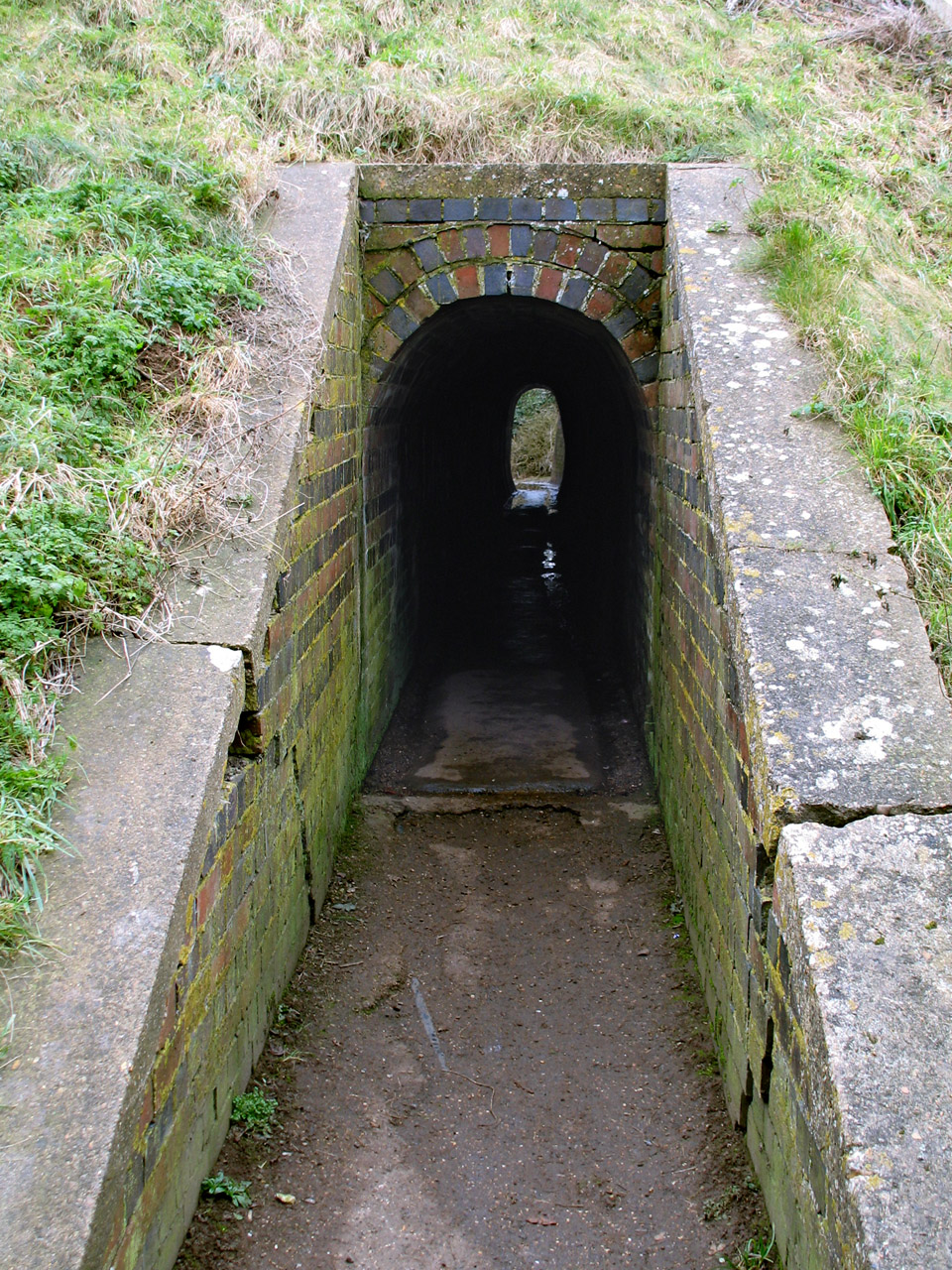
One of the cattle creeps passing under the embankment
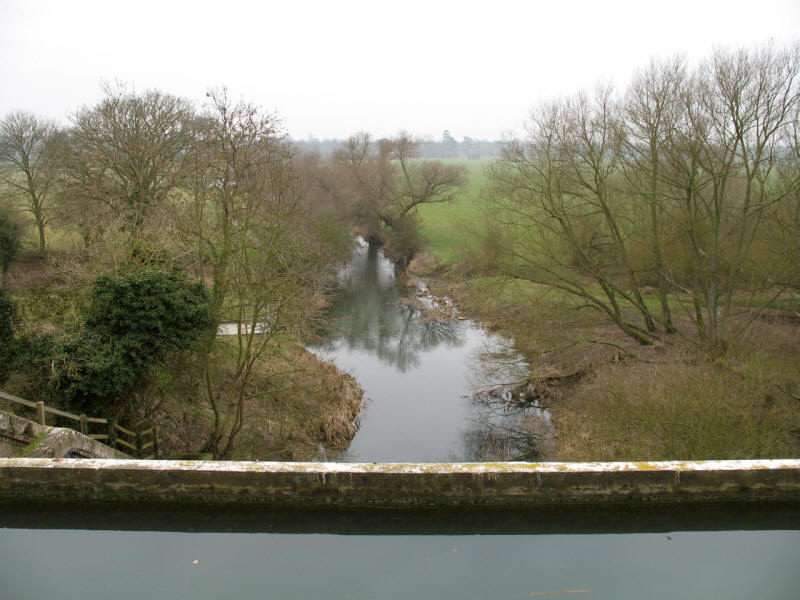
From on the aqueduct, looking south-west up the river across the narrow lip of
the aqueduct
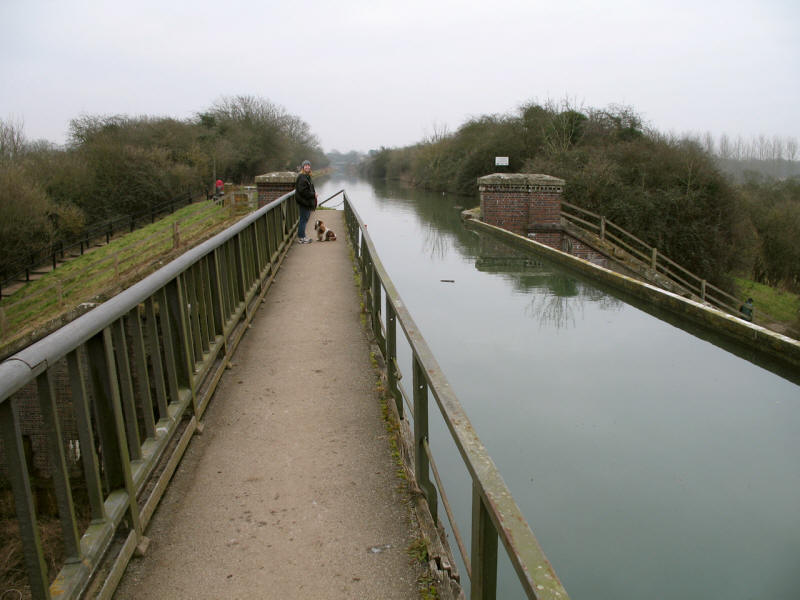
Looking south-east towards Milton Keynes and London
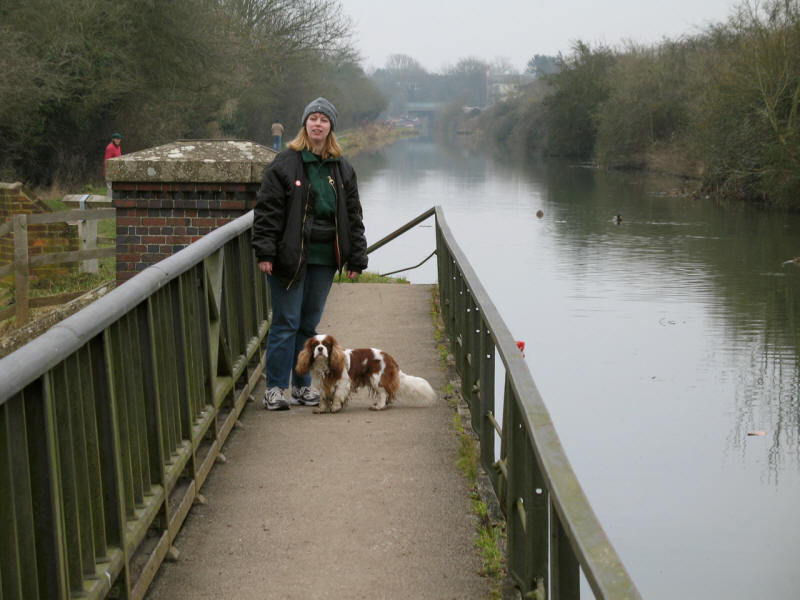
Lucy and Henry enjoying the walk
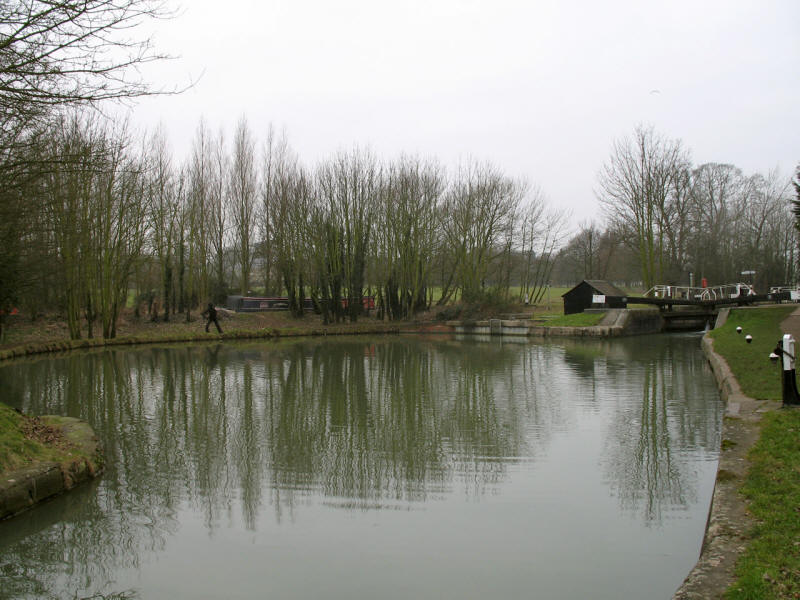
At the end of the embankment is this winding hole and Cosgrove lock
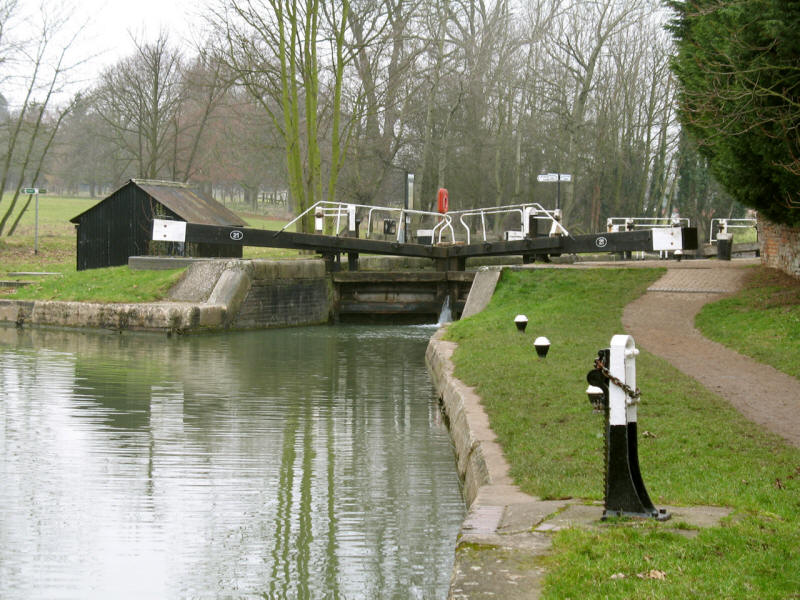
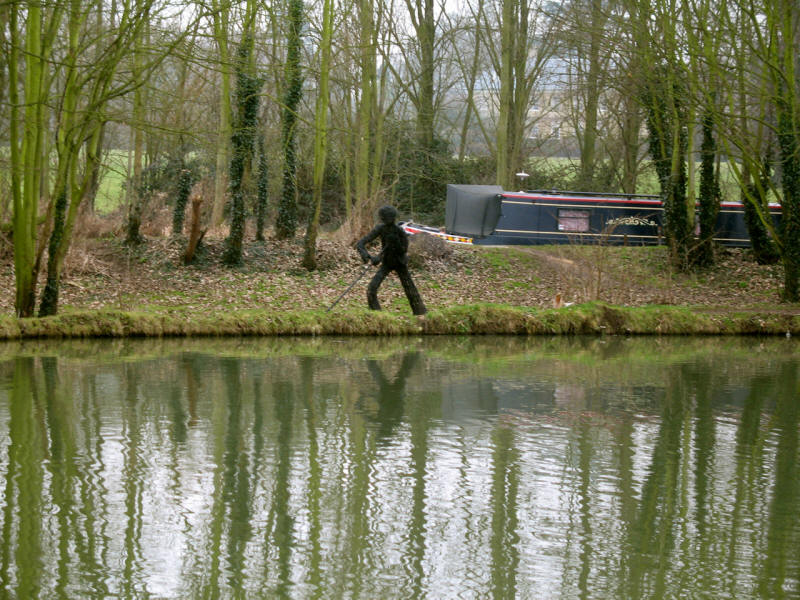
A sculpture of wire, presumably by the same artist as that at
Stoke Bruerne. The boat
behind is on the stub of the Buckingham branch of the canal, now closed.
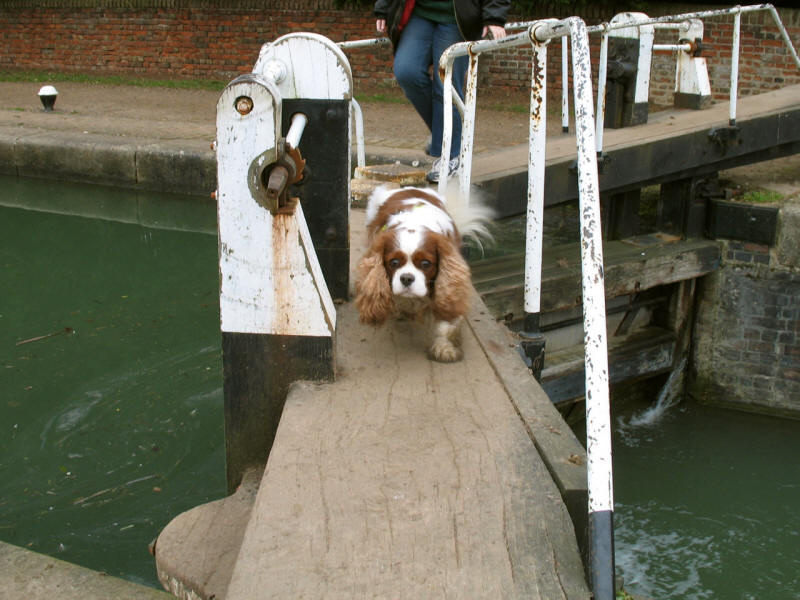
Henry rather anxious about crossing the lock gate
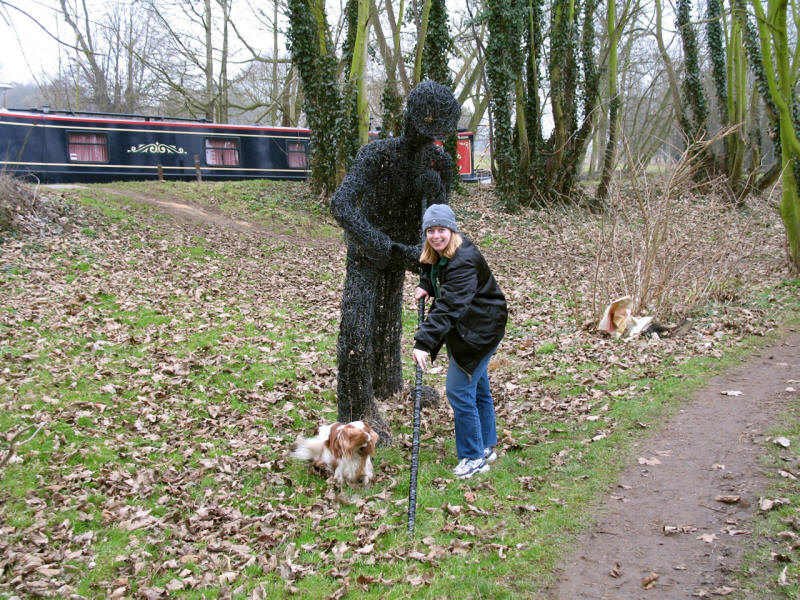
Lucy and Henry helping out.
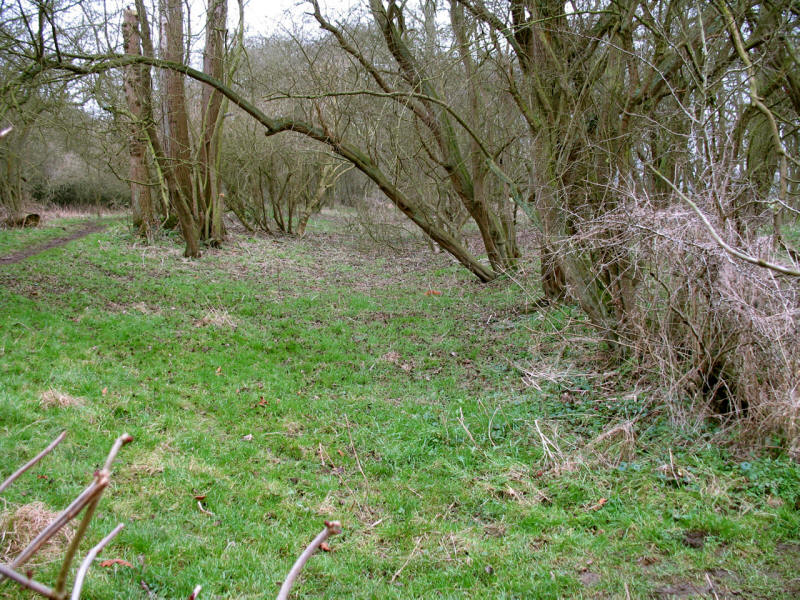
As we return to the river, walking parallel with the embankment, the shallow
trough which was once the original canal bed, can just be made out in the trees.
|